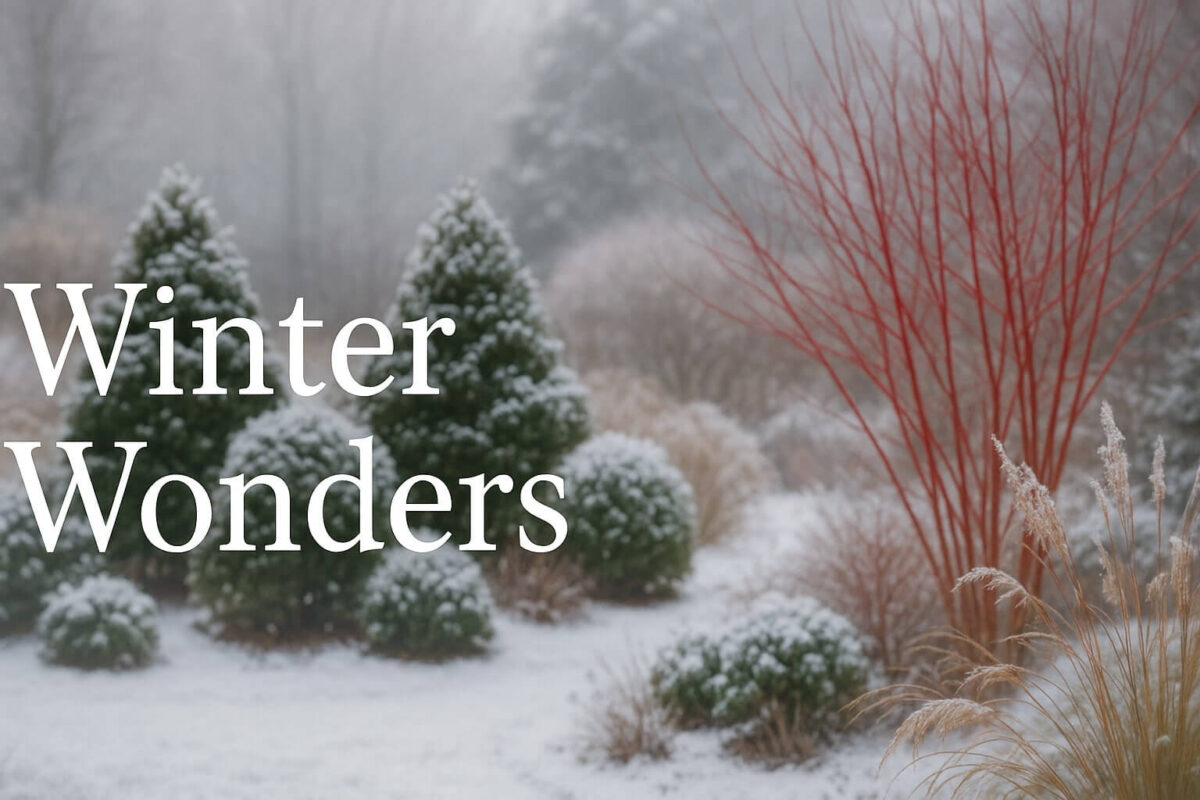When the trees drop their leaves and frost kisses the garden, many yards fall silent, left bare until spring returns. But winter doesn’t have to be an off-season in your landscape. In fact, it can become one of the most visually interesting and peaceful times of year with the right planning. This is where winter landscaping ideas come to life, turning your cold-weather garden into a quiet sanctuary full of form, texture, and subtle color.
Picture this: a soft dusting of snow settles on the upright structure of a dwarf spruce, red-twig dogwoods blaze like embers across a white canvas, while bronze grasses sway in the wind, catching light like brushed copper. You don’t need to overhaul your yard, you just need to know where to add layers of interest that endure through the seasons. Whether you’re working with a wide suburban lawn or a narrow city garden, small adjustments can make a world of difference when everything else looks asleep.
Evergreens, berries, and bark: quiet heroes of winter
A strong winter garden starts with what stays standing. Evergreen plants offer more than just year-round color, they provide bones to the garden when everything else is stripped away. Look for conifers like dwarf blue spruce, columnar junipers, or golden thread cypress to add height and shape. These plants don’t just fill space, they catch snow in magical ways, creating a quiet architecture in your landscape.
For pops of color, red-twig dogwood is a standout. In summer it may fade into the background, but in winter, its vivid stems glow against the snow. Pair it with scarlet willow or ‘Midwinter Fire’ dogwood to create contrast and depth. Even trees can play a role in winter landscaping ideas, paperbark maple with its peeling cinnamon bark, or a Himalayan birch with its silvery trunk, offer visual warmth in the coldest months.
And let’s not forget about berries. Winterberry holly is a classic, lighting up the landscape with clusters of bright red fruit that birds adore. Crabapples can also be a great choice, especially varieties that hold their fruit through the winter. They offer both color and wildlife interest, making your garden feel alive when everything else is dormant.
Textures that shimmer in frost, lighting that brings it all to life
A clever winter landscape is about more than just plants. Texture plays a huge role in making your space feel dynamic. Let some of your perennials stand through the winter rather than cutting them back in fall. Coneflowers, sedum, ornamental grasses like prairie dropseed or little bluestem, they all create beautiful silhouettes that catch frost and sparkle in the morning light.
Hardscaping also earns its keep in winter. Gravel paths crunch satisfyingly underfoot and look crisp against snowy edges. Low stone walls offer structure and define spaces while holding heat and keeping snow from drifting too far. Even a simple bench can become a focal point if placed with care.
Add lighting to take the garden into the evening hours. Uplight the trunks of key trees, wrap fairy lights around a trellis, or add soft glow path lights to make your yard feel like a winter retreat. Choose warm LEDs instead of cool white so the effect is cozy, not harsh.
Containers are another secret tool in winter landscaping ideas. Reuse your summer pots by stuffing them with fir, cedar, juniper, pinecones, birch sticks, and curly willow. Add in dried hydrangea heads for volume and maybe a few LED candles for glow. This makes porches, patios, and doorways feel festive even without traditional holiday decor.
Keep it low-maintenance and eco-smart
Winter can be tough on plants, but a little preparation goes a long way. Water your evergreens well before the ground freezes, then mulch around the base with bark or shredded leaves. Leave a bit of breathing room around the trunk to prevent rot. This not only insulates the roots but also keeps the soil from heaving when the temperature swings.
Think about where snow gets piled up. If your driveway salt washes into your beds, try switching to sand or salt-free de-icers. Burlap screens can be used as windbreaks near roads to protect delicate hedges. And be gentle with snow removal, brushing snow off shrubs is okay if it’s fluffy, but never break ice off, as it can snap branches clean.
Don’t forget the wildlife. Many native grasses, berry bushes, and dried perennials provide winter food and shelter for birds and beneficial insects. By letting some things stand a little longer, your garden becomes part of a winter ecosystem that keeps nature humming along until spring returns.
Even pruning has its season. Late winter is a great time to shape fruit trees, grapevines, or wisteria. With no leaves in the way, you can see the structure clearly, and the wounds will heal quickly as the growing season begins.
A winter garden doesn’t rest, it reveals
One of the most rewarding things about winter landscaping ideas is that they ask you to slow down and notice the little things. A curl of bark, a dusting of snow on moss, the shadow of bare branches on a frosty morning. When you build a winter garden, you’re not just decorating a space, you’re curating a quiet experience that can bring joy in the stillness.
If you’re starting from scratch, begin small. Choose one evergreen to anchor the view from your window. Plant a shrub with berries near your feeder to watch the birds gather. Light a corner of your yard and see how it changes after dark. These touches are small, but their impact lasts all season.
Whether your winters are snowy, mild, or somewhere in between, there’s always a way to make the landscape shine. The key is blending plant structure, smart hardscape, warm lighting, and a little seasonal flair. Together, they create a garden that doesn’t disappear when the weather cools, it transforms, showing a different kind of beauty, quieter maybe, but no less magical.

